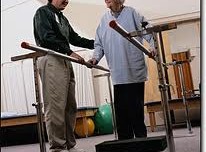 Do you have pain in your back, particularly your lower back – that area around your belt line or slightly lower? If not, please consider yourself lucky, but also just wait. According to some experts, about four in five Americans will at some point in their lives experience low back pain…chronic low back pain. What may be surprising is that most of these cases have no specific cause that can be diagnosed.
Do you have pain in your back, particularly your lower back – that area around your belt line or slightly lower? If not, please consider yourself lucky, but also just wait. According to some experts, about four in five Americans will at some point in their lives experience low back pain…chronic low back pain. What may be surprising is that most of these cases have no specific cause that can be diagnosed.
As a geriatric care management professional, I hear about this a lot. And if you are a caregiver to an older adult, you may hear this from your loved one as well, or you may be experiencing the pain yourself. So, as a consequence, doctors are seeing more and more of these patients, and without having a specific cause to address they may be tempted to treat the pain. While surgery may be an option for serious spinal conditions, most of this low back pain does not reach such a level of acuity to justify surgery. A lot of doctors have started giving injections into the site with anti-inflammatories, opioids, or in some cases vitamin B-12.
Injections would be great if they worked, but there is not much evidence to suggest that the injections are any more than a short term fix for the pain. A research commentary, reported earlier this summer in the Journal of the American Medical Association, says that there is almost no evidence in the larger literature that injections have any positive effect over the long term. Other reports suggest that they likewise do not substantially reduce the likelihood of surgery later. There was one research study published in February that actually showed the opposite; patients with pinched nerves in their lower back receiving injections showed less pain relief than a control group who received no injections. The JAMA authors are now recommending against injections.
What are the alternatives? Here are :
- For those with above average weight, especially belly fat, weight loss can be very beneficial.
- Strengthen the back muscles with more exercise. It could be as easy as taking longer walks, swimming or riding a bicycle.
- In a journal called The Clinical Journal of Pain, doctors recommend yoga or Pilates as a somewhat more aggressive approach that has showed good results.
It does not have to be confusing. According to some physicians, we seem to have made a symptom into a diagnosis. That is to say that pain is the result of something being wrong, and we ought to treat the source of a problem. Yet, most doctors do not like to prescribe long walks or losing weight, because patients ask for a “quick fix” to their problems. We have come to view pills as a solution to our problems instead of changing our lifestyles. I have talked in other postings about helping older adults to have more active lifestyles, because it will be helpful for their sense of well-being. Being more active, it seems, also will be good for addressing low back pain. Do it in small measures at first, but be persistent and grow the number of minutes, laps, blocks or other measure of investment in an active life.
If you as a caregiver are walking with your older loved one, you also may find that the social activity of conversation is a health boost. Make sure their shoes give them solid support. The pain may not totally go away, but chances are that there will be relief at least during the exercise. And the relief can continue to grow.
Charlotte Bishop is a Geriatric Care Management professional and founder of Creative Care Management, certified professionals who are geriatric advocates, resources, counselors and friends to older adults and their families in metropolitan Chicago. Please email your questions to info@creativecaremanagement.com.




